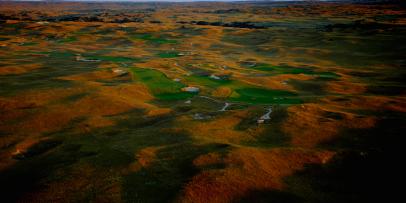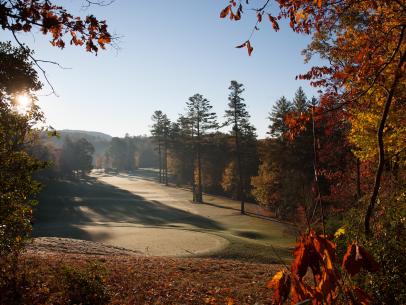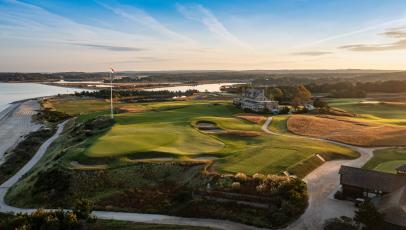All About Aesthetics
America's 25 most beautiful golf courses, ranked
A great golf course is not only a thorough examination of golf, but it is also a satisfying visual experience. That is the premise behind our Aesthetics scoring category, one of the six criteria that our course-ranking panelists use to judge a course's architecture. In many ways, it is the most subjective category, but when counting 80,000 evaluations across our 10-year cycle, we have tons of data to determine the most beautiful courses in the country.
To judge a course’s Aesthetics, we urge our panelists to focus on the features within a course, not just outside of it. We ask, “How well do the scenic values of the course (including landscaping, vegetation, water features, golf features and backdrops) add to the pleasure of the round?”
A course’s backdrop is just one factor; equally important are the more subtle ways in which an architect can enhance a course’s attractiveness, such as using a variety of grasses to add texture, hiding cart paths, or maintaining intentional bunker edging.
Based on panelist scores in Aesthetics from our new America’s 100 Greatest and Second 100 Greatest rankings, we’ve ranked the 25 most beautiful golf courses in the United States. There is remarkable variety on the list—oceanside, mountain and parkland courses all land a spot. Sand Hills, perhaps the most natural course in the country, ranks highly, as does Shadow Creek, perhaps the most artificial design in the nation. We're proud of our panelists’ openness to the unique factors that make a course beautiful.
Scroll down for the complete list of the most beautiful courses in the country. We urge you to click through to each individual course page for bonus photography, drone footage and reviews from our course panelists. Plus, you can now leave your own ratings on the courses you’ve played … to make your case why your favorite should be ranked higher.

From Golf Digest Architecture Editor emeritus Ron Whitten:
Cypress Point, the sublime Monterey Peninsula work of sandbox sculpture, whittled Cypress and chiseled coastline, has become Exhibit A in the argument that classic architecture has been rendered ineffectual by modern technology.
I'm not buying that argument. Those who think teeny old Cypress Point is defenseless miss the point of Alister MacKenzie’s marvelous design.
MacKenzie relished the idea that Cypress Point would offer all sorts of ways to play every hole. That philosophy still thrives, particularly in the past decade, after the faithful restoration of MacKenzie’s original bunkers by veteran course superintendent Jeff Markow.
Explore our complete review here—including bonus photography and ratings from our expert panelists.
























• • •
Explore Golf Digest's recently relaunched Places to Play community, where you can add star ratings and reviews for all the courses you play. We've collected tens of thousands of reviews from our course-ranking panelists to deliver a premium experience, which includes experts' opinions, bonus course photography and videos, plus much more. Check it out here!






 hero.jpg.rend.hgtvcom.406.203.suffix/1620136440329.jpeg)